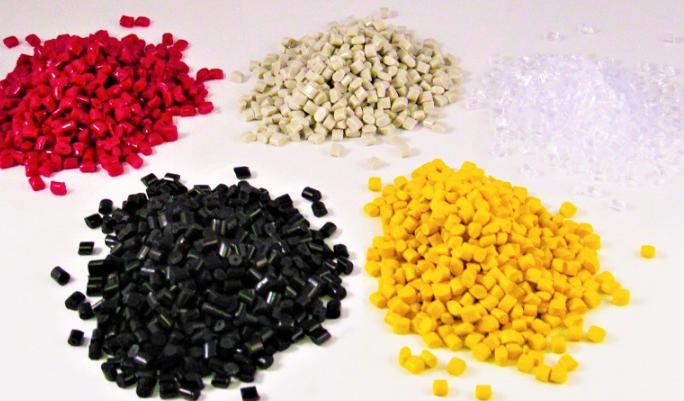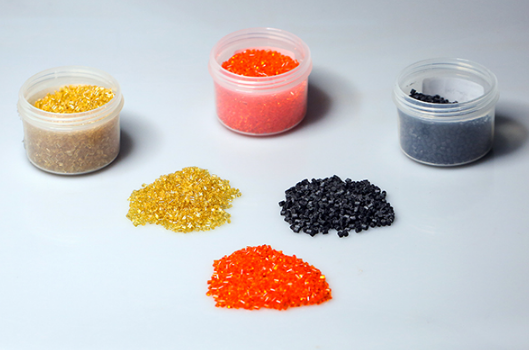The strongest materials for injection molding are typically PEEK and Polycarbonate for their high strength and durability.
Overview of High-Strength Materials in Injection Molding
Criteria for Determining Material Strength
Selecting the strongest materials for injection molding involves evaluating several critical criteria to ensure their strength and appropriateness for various applications.

Tensile Strength: A key indicator of material strength, tensile strength shows how much stress a material can endure before breaking. High-strength materials typically exhibit tensile strengths ranging from 50 to 100 MPa (megapascals).
Impact Resistance: Materials must be able to absorb energy and withstand sudden impacts without fracturing. High impact resistance becomes crucial in applications demanding durability.
Thermal Stability: Materials need to maintain their properties under high temperatures. For instance, some high-strength materials remain stable at temperatures above 150°C.
Chemical Resistance: This attribute is essential for materials to resist degradation when exposed to chemicals. It becomes a decisive factor for parts used in harsh chemical environments.
Flexural Strength: The ability to withstand bending forces is vital, especially for structural components. Materials with high flexural strength are often preferred in such applications.
Cost-Effectiveness: Although not a direct strength indicator, cost significantly influences material selection. The affordability of high-strength materials can impact their suitability for certain applications.
Understanding these criteria is pivotal for choosing the most suitable material for specific injection molding applications, as seen in the evolving world of Injection Molding Materials. This understanding enables manufacturers to meet diverse industrial requirements with the right material choices.
Comparison of Top High-Strength Materials
Physical and Mechanical Properties
This table compares the key physical and mechanical properties of top high-strength materials used in injection molding:
| Material | Tensile Strength (MPa) | Impact Resistance | Thermal Stability (°C) | Flexural Strength (MPa) |
|---|---|---|---|---|
| Polycarbonate (PC) | 60-70 | High | Up to 140 | 90-120 |
| Polyetheretherketone (PEEK) | 90-100 | Very High | Up to 260 | 170-200 |
| Nylon (PA) | 50-80 | Moderate | Up to 150 | 70-100 |
| Acrylonitrile Butadiene Styrene (ABS) | 40-52 | High | Up to 110 | 60-80 |
Polycarbonate stands out for its balance of strength and impact resistance, PEEK for its superior thermal stability and strength, Nylon for its toughness and versatility, and ABS for its good overall mechanical properties and impact resistance.
Cost and Availability Considerations
The following table provides an overview of the cost and availability aspects of these materials:
| Material | Average Cost (per pound) | Availability | Advantages | Disadvantages |
|---|---|---|---|---|
| Polycarbonate (PC) | $2 – $3 | Widely Available | Excellent transparency, High impact resistance | Prone to scratches |
| Polyetheretherketone (PEEK) | $25 – $30 | Limited | Exceptional thermal stability, Chemical resistance | High cost |
| Nylon (PA) | $1 – $2 | Widely Available | High wear resistance, Versatility | Moisture absorption |
| Acrylonitrile Butadiene Styrene (ABS) | $1.50 – $2.50 | Widely Available | Good overall properties, Easy to process | Not suitable for high-temperature applications |
While Polycarbonate and ABS offer a good balance of properties at a moderate cost, PEEK commands a premium due to its exceptional properties, and Nylon is valued for its versatility and wear resistance.
For further insights into these materials, explore Injection Molding Materials on Wikipedia.
Application-Specific Analysis of Strong Materials
Industrial Applications
Strong materials in injection molding are pivotal for various industrial applications due to their specific properties.
Automotive Industry: Materials like Polycarbonate (PC) and ABS are widely used for their impact resistance and durability. For example, PC, with its high tensile strength of around 70 MPa and thermal stability up to 140°C, is ideal for automotive lighting and dashboard components.
Consumer Electronics: ABS, known for its good overall mechanical properties, is a popular choice in this sector. Its impact resistance and moderate thermal stability make it suitable for casings and structural parts of electronic devices.
Medical and Aerospace Applications
The medical and aerospace industries require materials with exceptional strength and precision.
Medical Devices: Materials like Polyetheretherketone (PEEK) are preferred due to their high thermal stability (up to 260°C) and excellent chemical resistance. PEEK, despite its high cost of $25 – $30 per pound, is used for surgical instruments and implants owing to its biocompatibility and durability.
Aerospace Components: The aerospace sector often utilizes materials such as PEEK and Nylon for their high strength-to-weight ratios and resistance to extreme conditions. Nylon, with its tensile strength of up to 80 MPa and ability to withstand temperatures up to 150°C, is suitable for various aerospace components.
Injection molding materials like PC, ABS, PEEK, and Nylon play crucial roles across these industries, selected for their specific strengths that meet the demands of each application.
For more detailed information, visit Injection Molding Materials on Wikipedia.
Advancements in High-Performance Polymers
Recent Developments in Polymer Science
The field of polymer science has made significant strides, introducing materials with enhanced properties for injection molding.

Self-Healing Polymers: These innovative polymers can repair minor damages, extending their useful life by up to 50%. The healing process typically activates at a specific temperature range, often between 20°C and 120°C.
Bio-Based Polymers: These sustainable alternatives, such as Polylactic Acid (PLA), show strength comparable to traditional plastics but with a 30-40% reduction in carbon footprint. However, they currently cost about 10-20% more than conventional polymers.
Advanced Composites: Incorporating nanomaterials has led to composites that offer up to 60% higher strength and 50% lighter weight compared to standard polymers. Their application in aerospace and electronics is growing, although their cost can be 2-5 times higher than traditional materials.
Future Trends in Material Engineering
Emerging trends in material engineering are set to revolutionize the properties and applications of polymers in injection molding.
Smart Materials: Development of polymers that respond to environmental changes could lead to parts that adapt their properties dynamically. The efficiency of these materials might reduce material usage by up to 20%.
Increased Material Efficiency: Future polymers are expected to enhance strength by up to 40% while reducing material usage, thereby cutting production costs significantly.
Eco-Friendly Materials: The next generation of eco-friendly materials aims to deliver high performance with a focus on recyclability and biodegradability. The adoption of these materials could lead to a reduction in plastic waste by up to 50% in the next decade.
Injection molding continues to evolve with these scientific advancements, promising more efficient, sustainable, and versatile material options.
For detailed data and statistics, visit High-Performance Polymers on Wikipedia.




